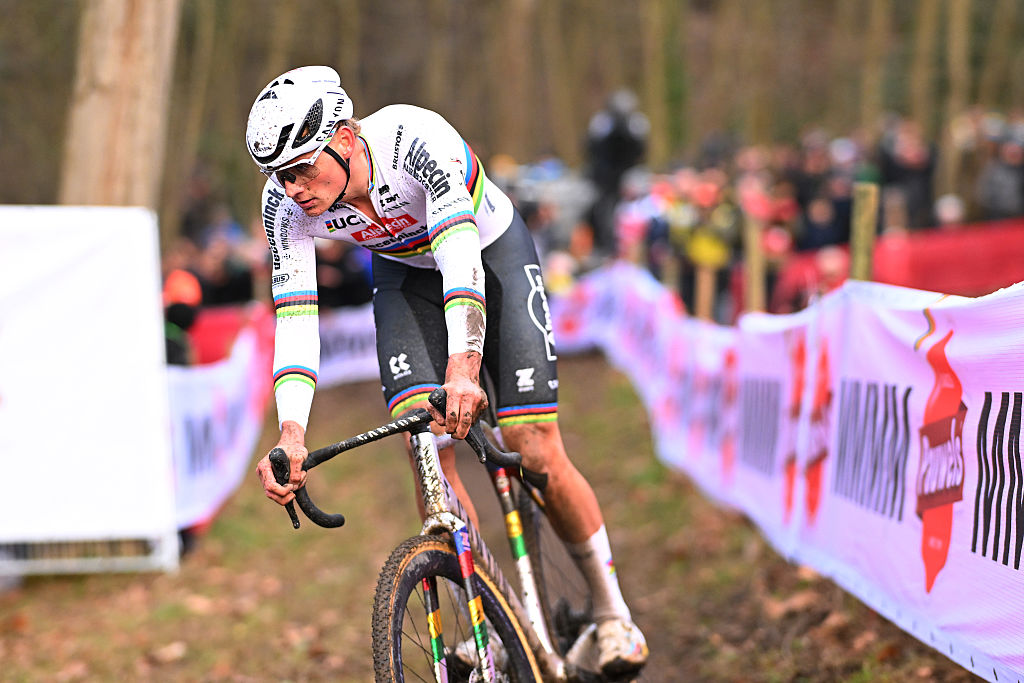Best CO2 inflators 2025: Fast tyre inflation in small packages
Tiny but mighty; the best CO2 inflators will fill your tyres and riding again in seconds
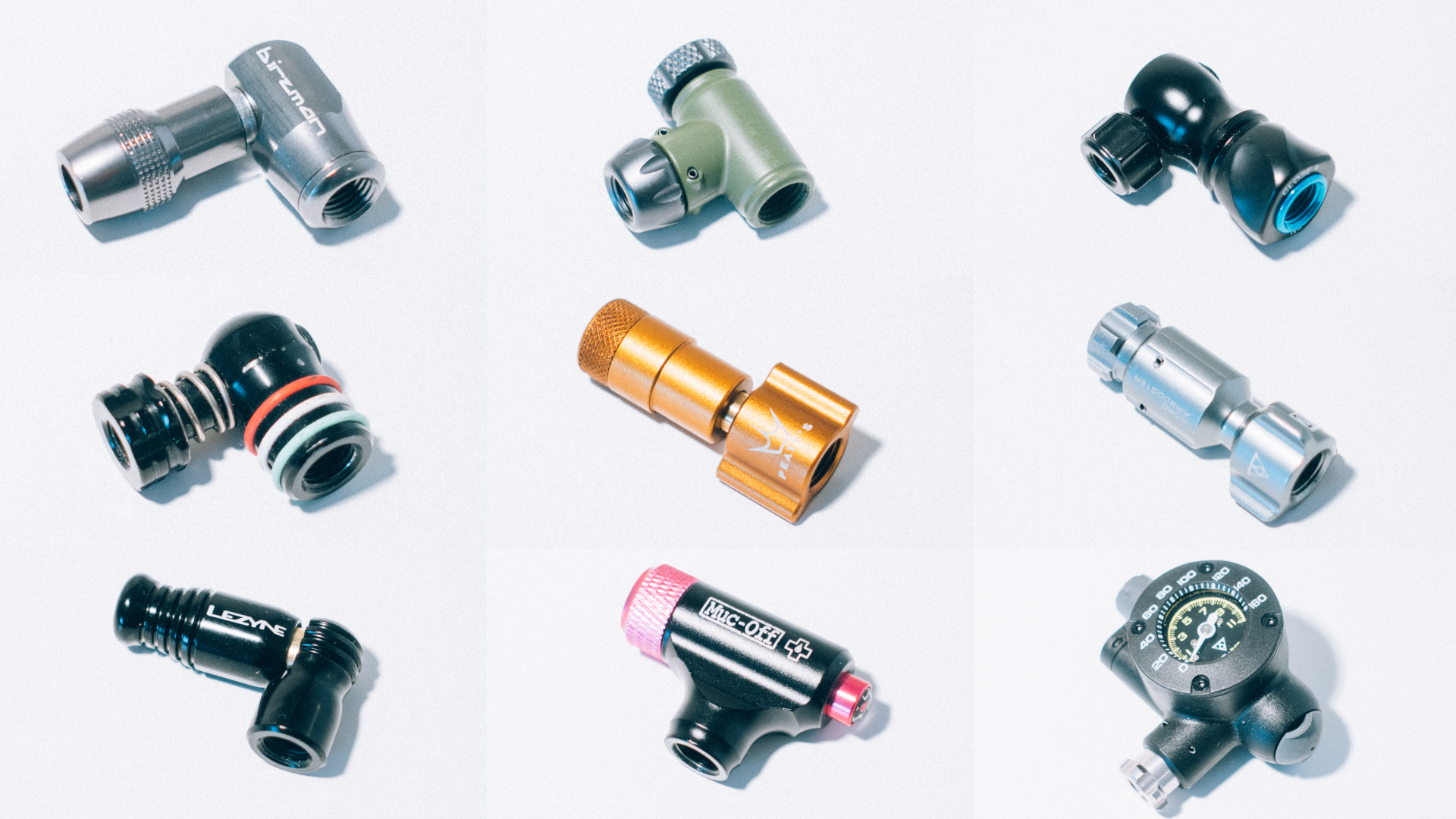
These little gizmos are excellent if you want to pump up your tyres FAST. They're incredibly simple, all of them act as a valve. Screw a CO2 canister on one end, screw the other onto your valve and either turn a knob or just press down and with a short blast of pressurised gas, you're good to go.
Unless you're racing and need the smallest, lightest setup possible, then I see them as an accompaniment to, rather than a replacement for, the best bike pumps, although we have discussed which is best. That being said, even the best gravel tyres sometimes unseat if they go flat, and a blast of carbon dioxide is far more likely to reseat them than your frantic pumping.
I have tested eight of the best CO2 inflators although given their simplicity, there's little differentiation between them. They all achieved the desired outcome of popping air into my tyres however some offer more features than others. If you want to know more about CO2 inflators, check out the how to choose section at the bottom.
The best CO2 inflators you can buy today
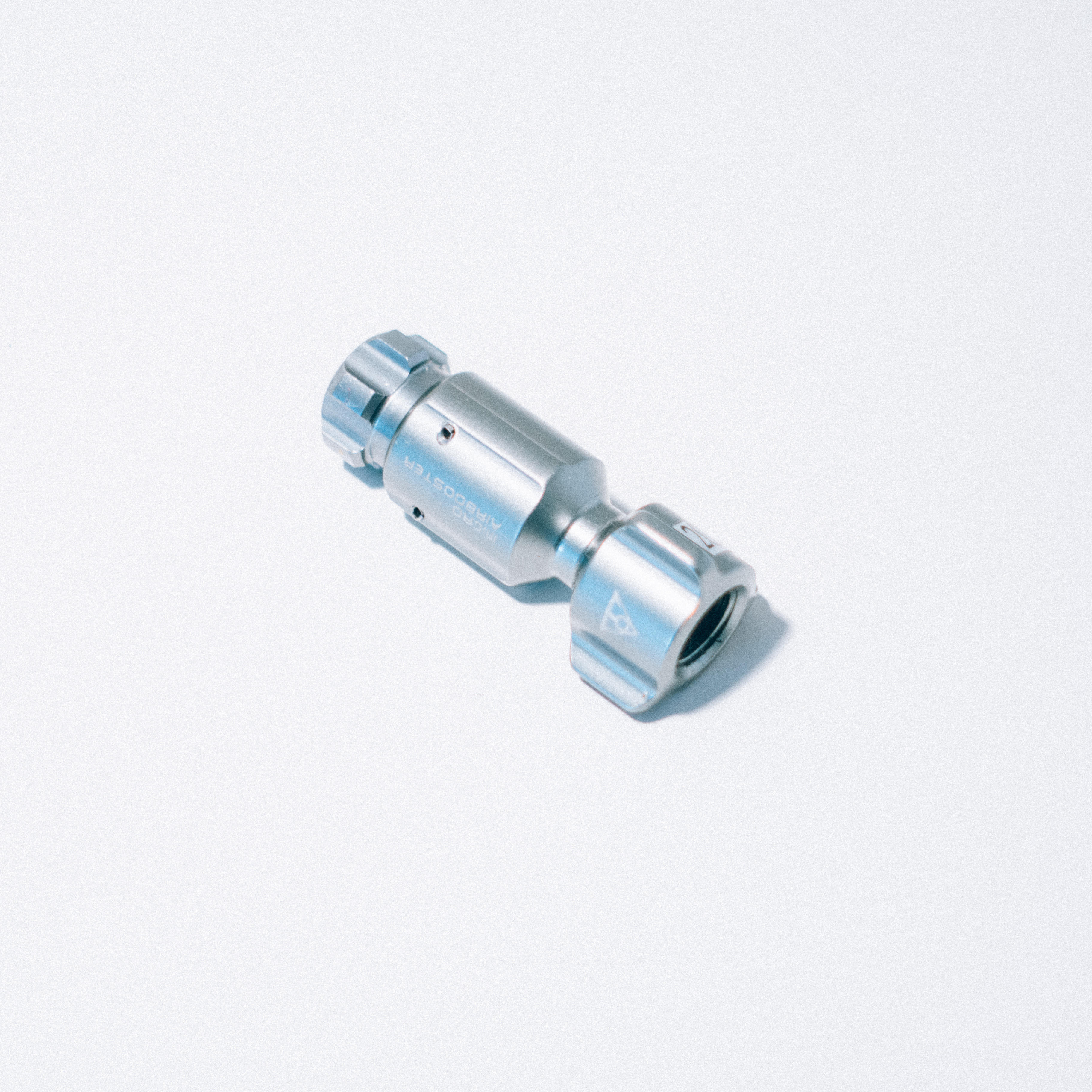
➕ Multiple valve types
➕ Well machined
➖ Gas delivery is a bit slow
An extremely slimline, well-machined option. It’s an inline-style inflator, with modulation adjusted by how hard you press it into the valve. The inclusion of a safety spacer to allow the whole system to be stored together is a good thing in our opinion, as is the valve head which can accommodate both Presta valves (by a simple press-on) and Schrader (by screwing on). I found the protective sleeve to be very well insulated against the cold, though a little prone to slipping. It's leak-free, but avoid over-tightening the canister or it blocks the airflow. Slower flow, but also not that prone to icing.
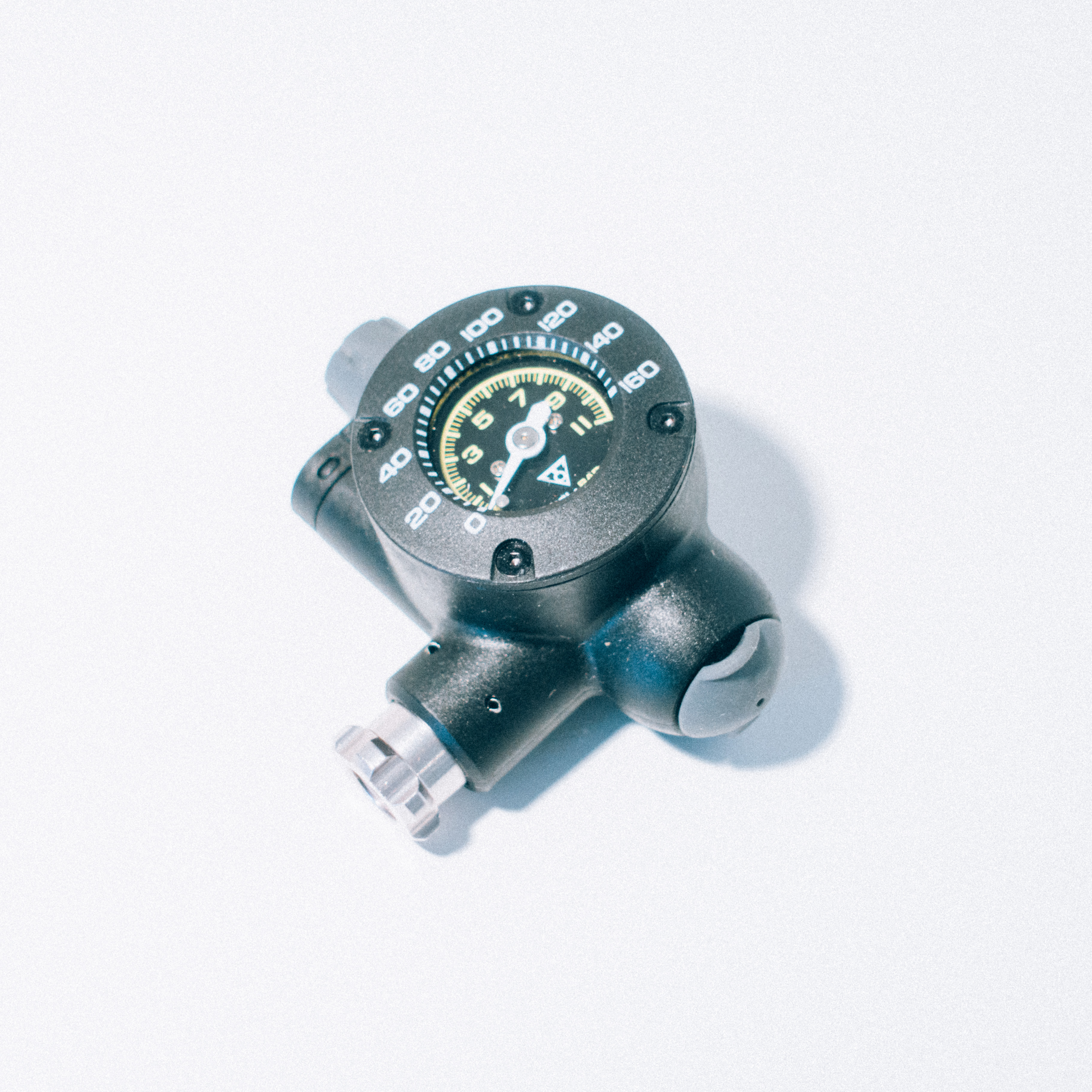
➕ Easy to read dial
➕ Works as a standalone pressure gauge
➖ Average modulation
➖ Confusing ports
One issue with CO2 inflators is you have no idea what pressure you end up with, unless you have hyper-accurate thumbs. The Topeak Airbooster G2 is by some margin the most chunky option on this list but it does feature a large, easy to read pressure dial. If you’re a Princess and the Pea rider who can notice five PSI on either side of your ideal then this is the one for you. In all honesty, I found the three ports (one for canister storage, one for the tyre valve, and one for the gas when in use) a little confusing, and needed the instructions to make sure. It comes with a safety spacer, so just use that and store the gas in the live port.
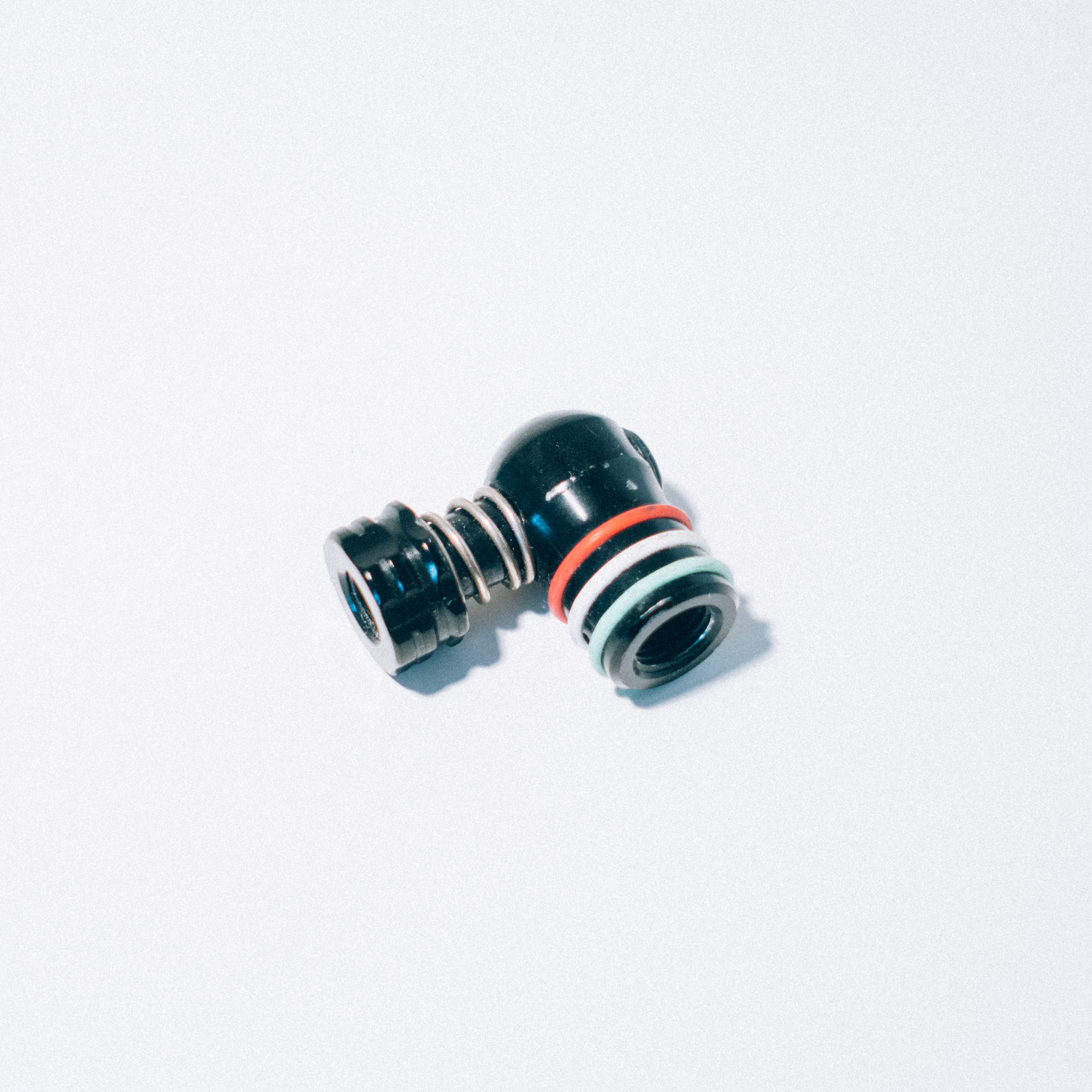
➕ Tiny
➕ Rapid gas delivery
➖ Poor modulation
➖ Frosty
The Silca Eolo III is, as you’d expect from the Italian brand known for luxury pumps and tools, extremely well-machined and one of the most simple of all the inflators featured here. The valve head screws onto the valve (presta only), then you press. The inflation was the fastest of all the models on test, but with that comes a massive lack of modulation. So fast was it that there wasn’t much chance for the head to ice up, which is fortunate as the three rubber O-rings don’t provide a great deal of thermal protection. It is also tiny, leak-free, and relatively affordable for a SIlca product.
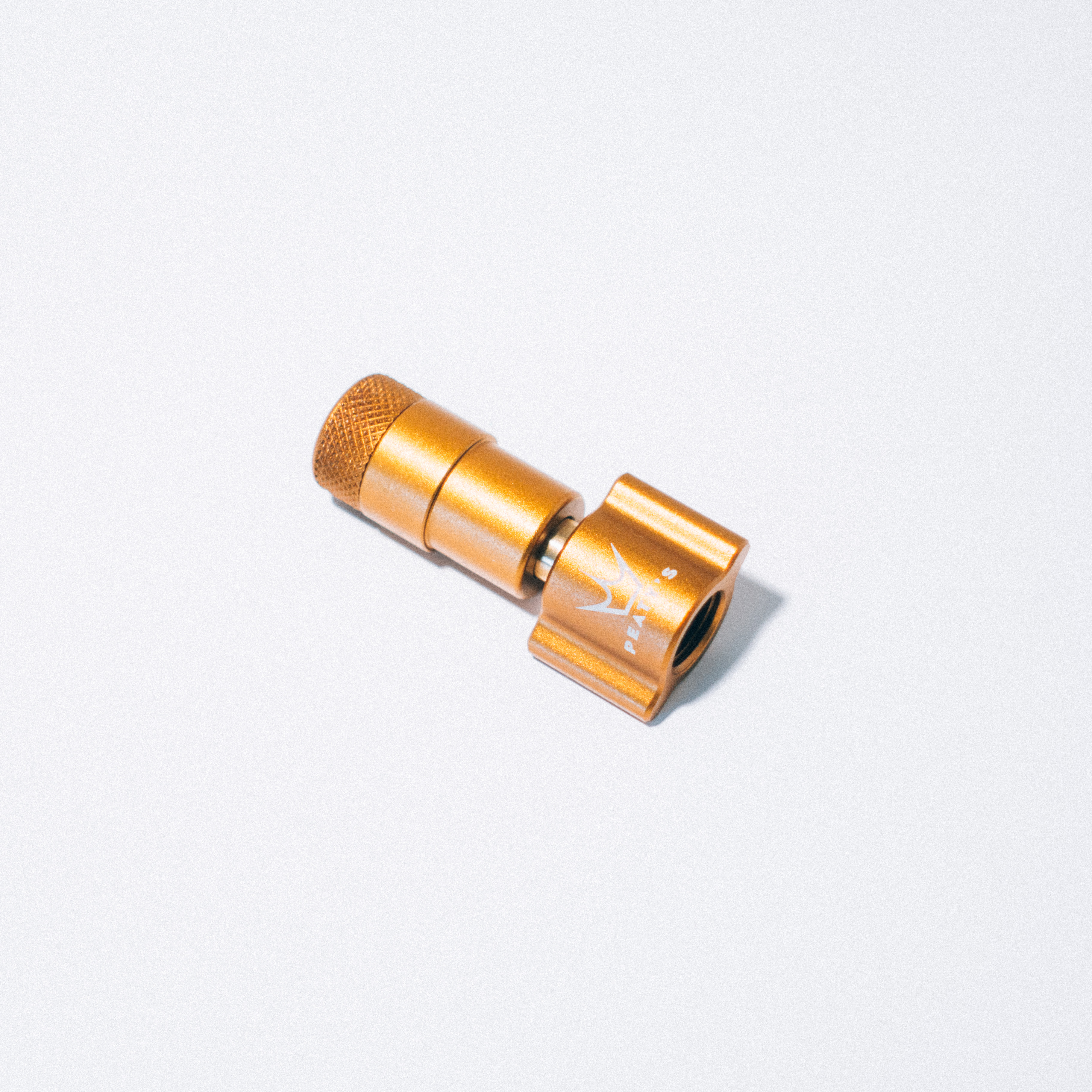
➕ Colourful finishes
➕ Protective sleeve has a base
➖ A bit leaky
When you offer any product in colours that match Chris King's anodisation it’s clear there’s been at least some consideration to aesthetics, more so than most on the list. Our matte bourbon inflator certainly looks classy but is far from style over substance. Inflation is rapid, thanks to the inline design and press-on connection. Gas installation was leak-free, though there was a small bit of leakage during use as I suspect the cooling effect caused differential expansion between the head and the canister. There’s no safety spacer, but gas is included and as a bonus, there is a very well-fitting protective sleeve that also covers the base so it doesn't slip off.
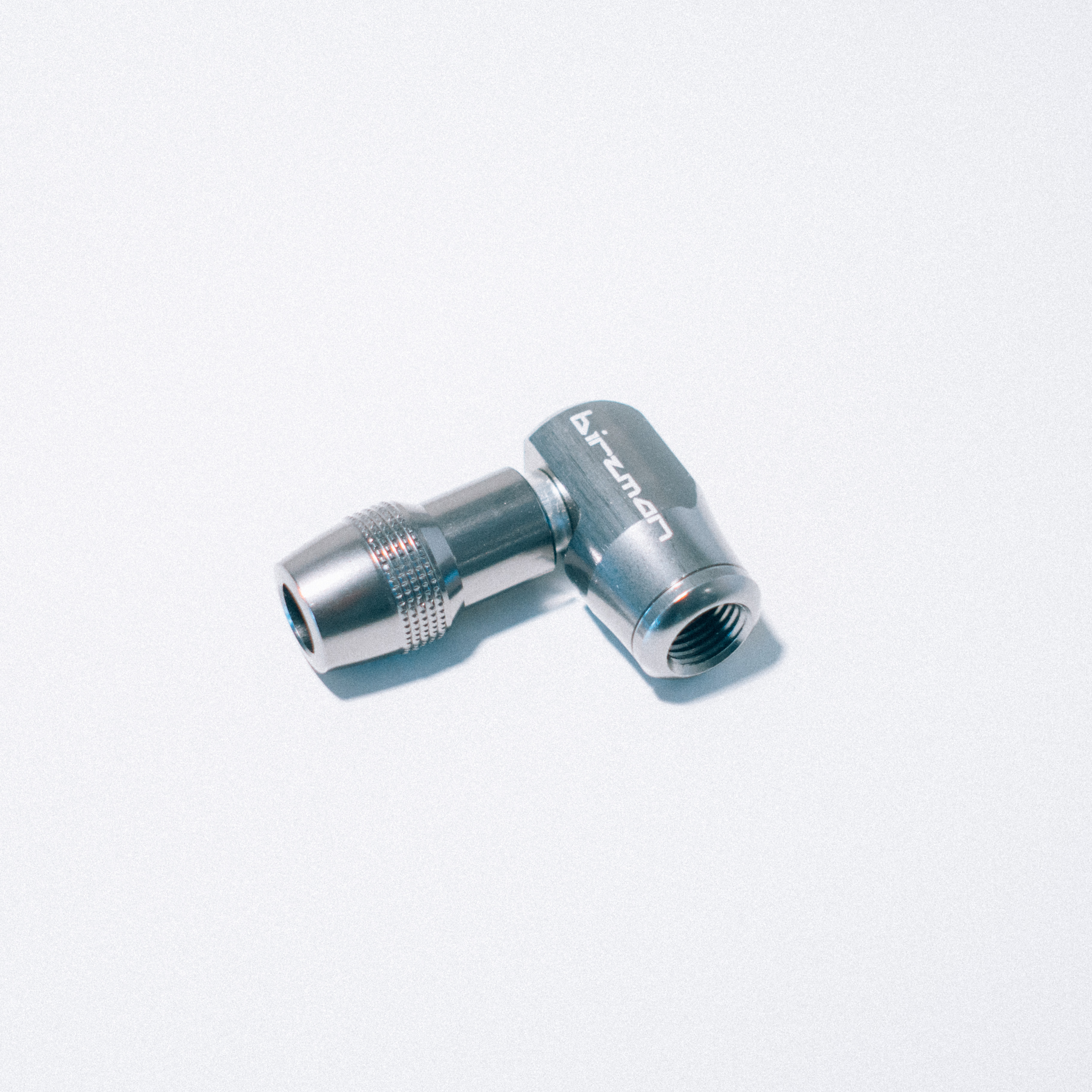
➕ Brilliant sleeve
➕ Leak free
➖ Lacking modulation
The obvious benefit of the Birzman Roar is the sleeve. It has the best coverage of any on test, fits well, and is very well insulated. It needs removing for cartridge installation, but that’s no real drawback. The real star is the insulated tab that sits over the head, allowing you to press down at the head rather than levering the canister. The cartridge installation was pretty stiff, the stiffest on test, but it did mean it was leak-free. The same can’t be said at the valve though, as we did lose some gas while inflating the tyre. Modulation wasn’t class-leading either, but it was acceptable compared to inline options like the Micro Airbooster.
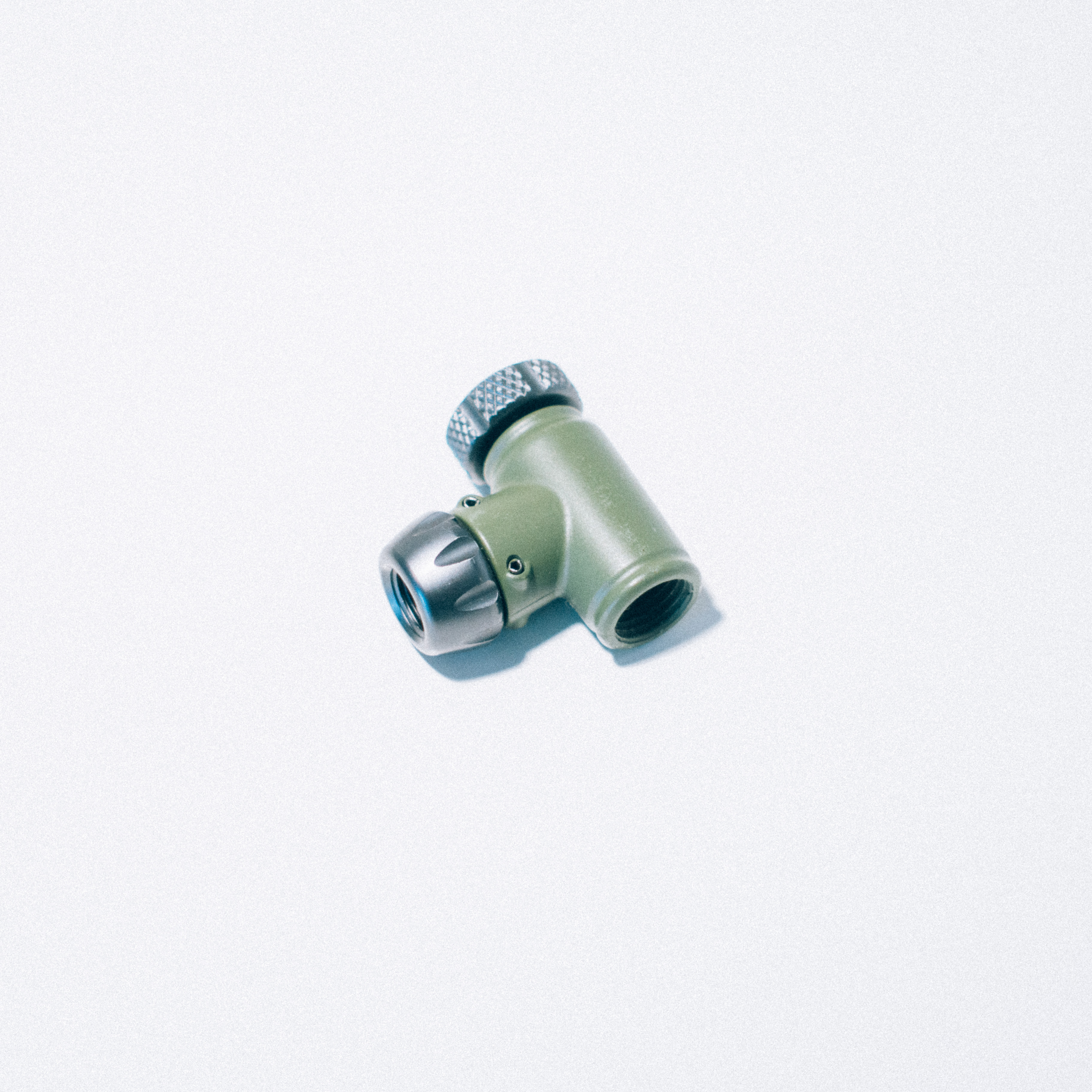
➕ Easy modulation
➕ Leak free
➖ No sleeve
I really like the Silca Eolo III, mostly as it's just really fast, but I appreciate the call for better modulation. It's all too easy to overfill the tyre, and then back off too much when letting air out, leaving you with a soft ride and no means to inflate. The Eolo IV takes the same form as the III, but adds a dial, meaning you can easily control the airflow into the tyre. It was leak-free, but the drawback is that it doesn't come with a sleeve and has done away with the rubber o-rings of the III too. Given the inflation will be longer with a dial I found it gets very frosty, so definitely one to use with gloves, rather than bare hands.
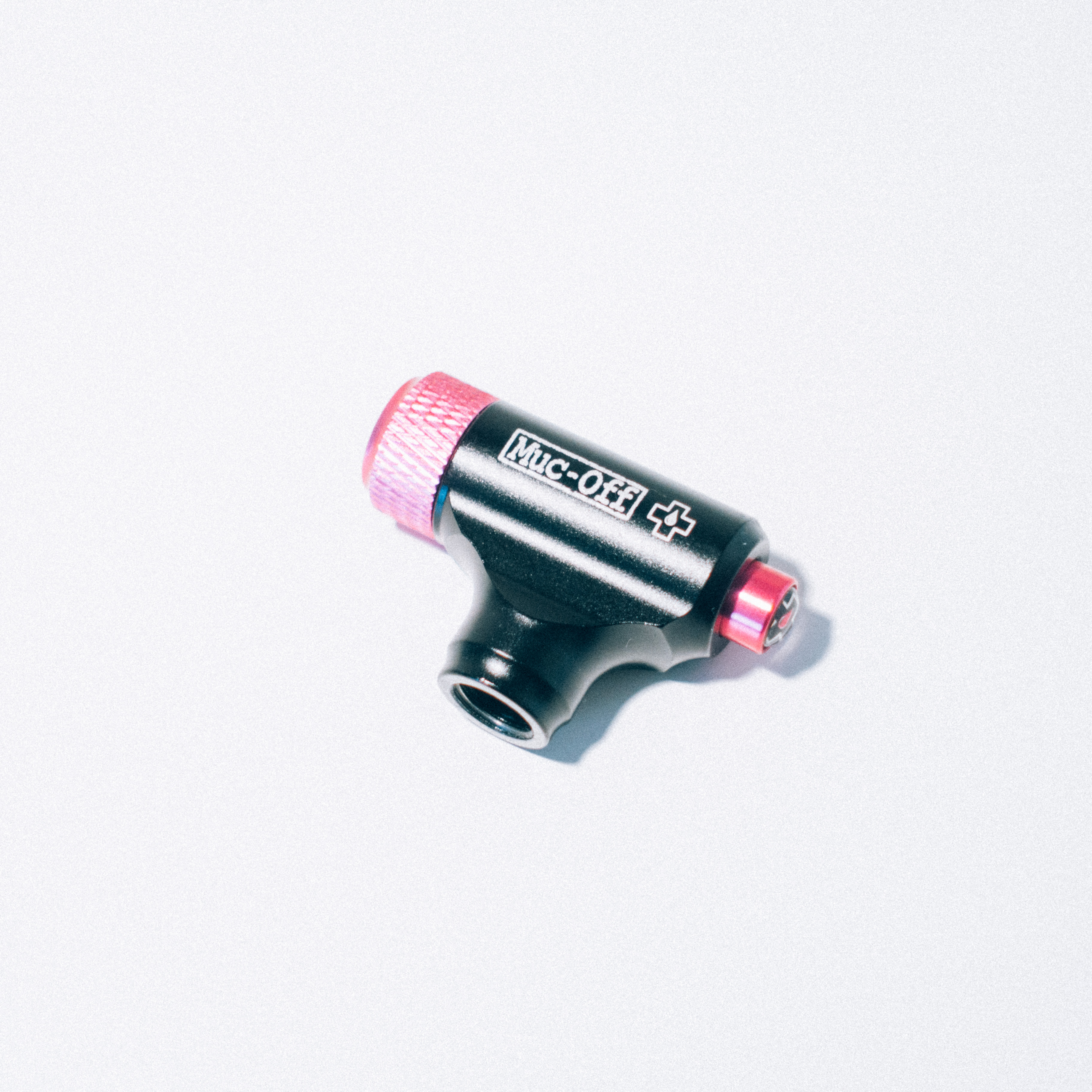
➕ Super easy
➕ Rapid
➖ Can overshoot
I really liked the Muc-Off CO2 inflator. Screw the canister in (leak-free), screw it onto the valve, then use your thumb on the back of the inflator head to release the gas. The button is plastic-backed, so your thumb won't get stuck as it ices up either. The button is more of an on/off switch than a real modulator, so the gas delivery is incredibly fast and as such I think probably better suited to gravel tyres than road, as you can easily overshoot. With a bit of practice, you can give really short blasts though, and it makes emptying the rest of the canister a breeze afterwards.
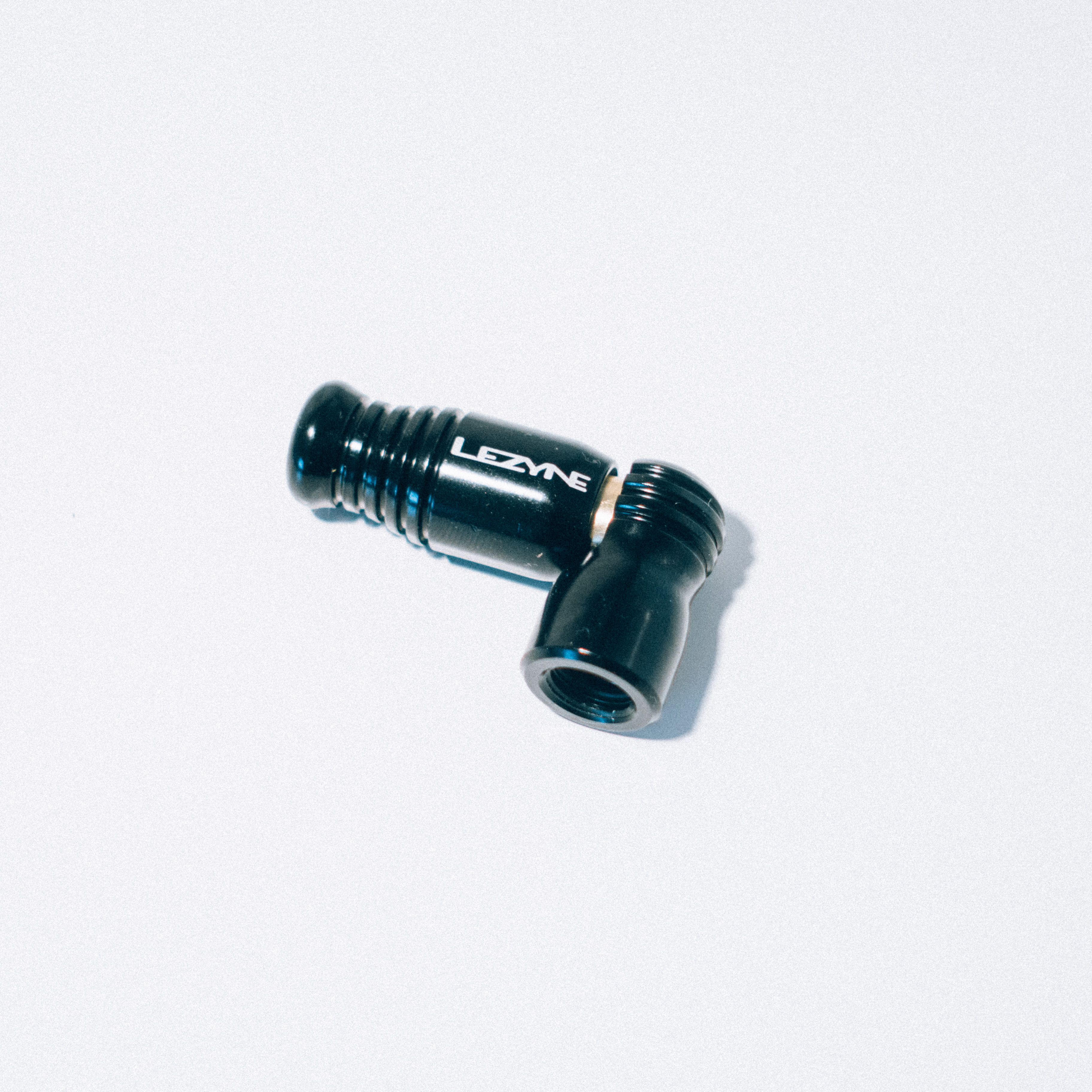
➕ Controlled gas flow
➕ No leaks
➖ Hard to empty
Like the Peaty's this is a press-to-inflate model, but is the most controlled of the bunch. There was no leaking at the valve, or at the installation of the canister, and the gas delivery was noticeably slower than other press-on options. If you like to keep a close eye on not overshooting, but what a really simple model then this is the one for you. I did find, as it was slow, that it iced up a lot, and nearly froze onto the valve. You're not going to overshoot easily with this so press and hold in one go is my advice. Emptying the dregs of the canister was a little tricky though, resulting in more icing up.
Last updated on 24th of January 2025
Updated the intro and How to choose section, made adjustments to the guide format and checked all products were still available for sale.
How to choose
Still a bit unsure as to what you're after? Worry not, I've got you covered. Whether you want to know more about how to use CO2 inflators, or simply aren't quite sure what they are as yet then scroll down and have a read of my curated FAQ's.
What are CO2 inflators?
In the basic sense, they're simply a small canister of compressed carbon dioxide that is delivered to your tyre via a valve head. There are variations on the theme but they all aim to do the same thing. Nearly all use threaded cartridges, so that’s all we’ve featured here, which come in either 16g or 25g varieties.
The two basic types are inline, whereby the cartridge is in line with the valve and actuated by pressing down, and angled types where the valve head forms a 90-degree angle and the canister will stick out sideways from the rim when in use. There’s no great difference between the two, but if you’ve got small wheels and lots of spokes then an angled one might be easier for you to use.
Some just need to be pressed onto the valve to release the CO2 while others have valves to control the flow of gas. The ones without valves tended to over-inflate, but then you just let a bit out from the tyre when you're done. There are a few with special features like gauges.
Many come with a protective sleeve as the Joule-Thomson effect (a change of temperature from the expansion of gasses) makes them frost up when in use,
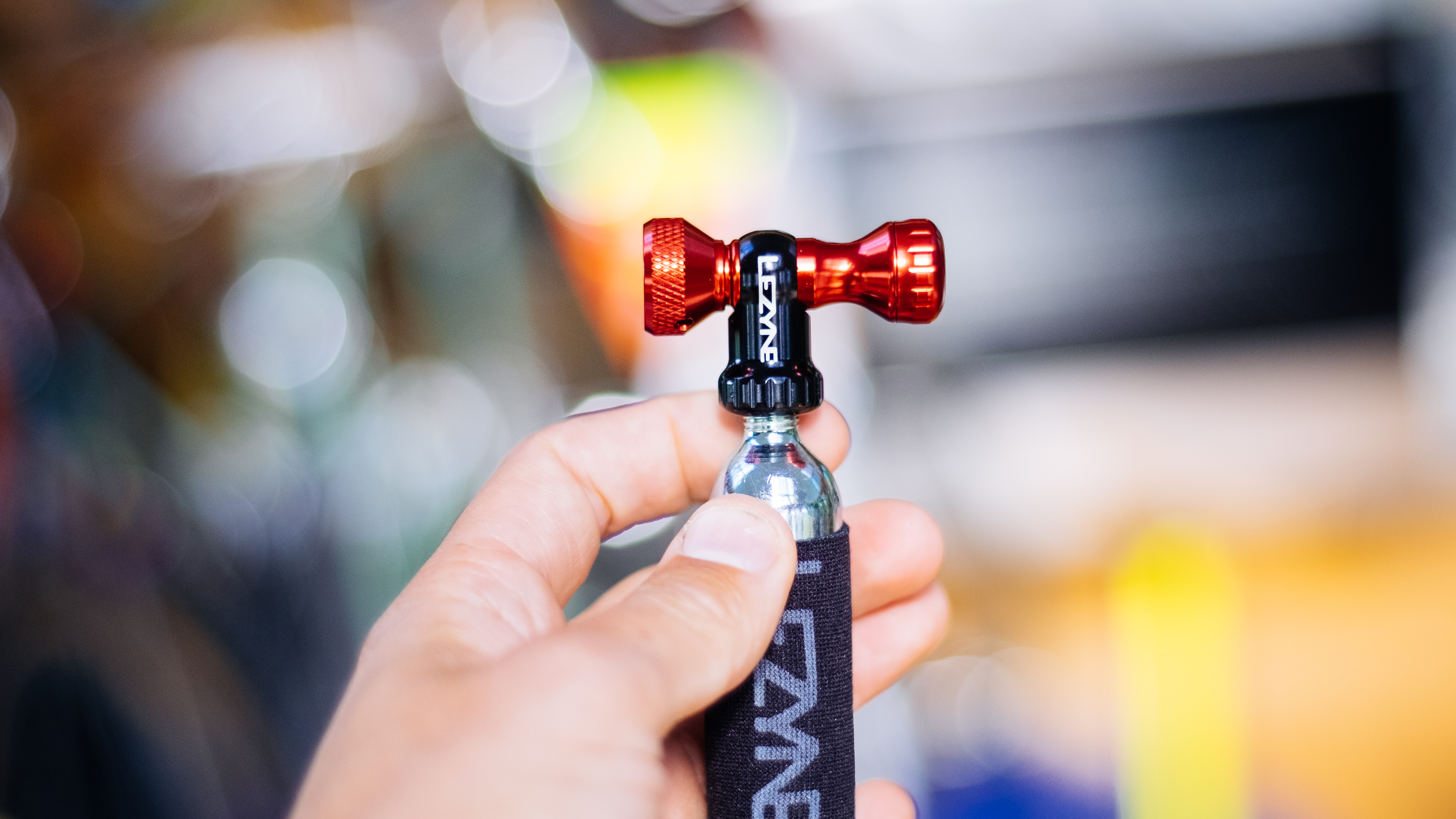
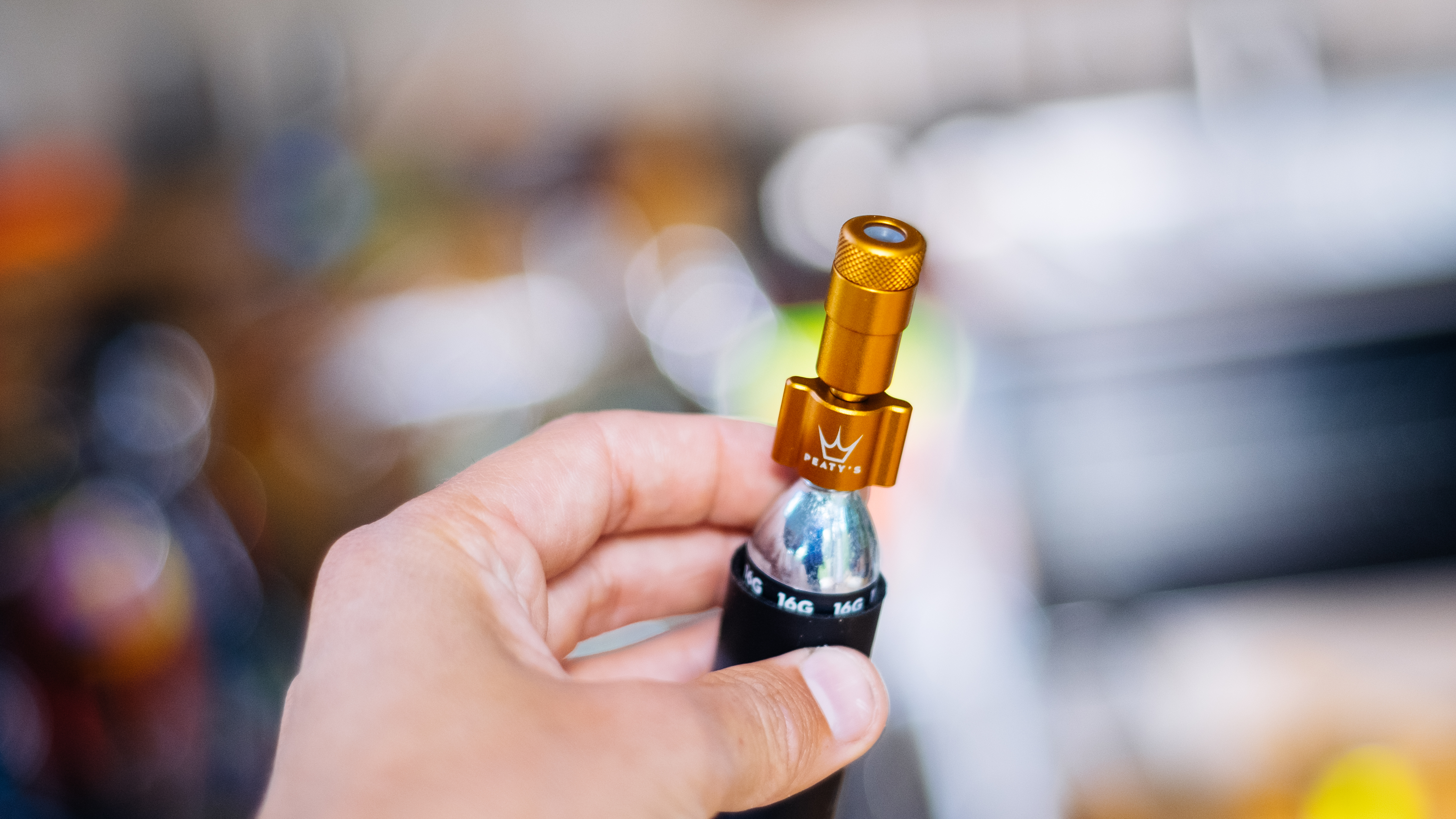
How many cartridges does it take to fill up a tyre?
For road tyres, a single 16g cartridge is sufficient for reinflation and will get it up to and over your desired pressure with ease. You may end up over-inflating and having to back off.
For larger volume tyres, we’re talking gravel bikes here, we’d go for a larger 25g cartridge. While you may have the volume within a 16g for reinflation, you may not be able to reach sufficient pressure to reseat your tubeless tyres, which would leave you in a pickle.
Can I use a CO2 inflator with tubeless tyres
On the whole, yes, though some sealants do say not to. The issue comes with the freezing effect of releasing compressed gas, which can freeze your sealant solid, rendering it useless. The best practice is to rotate the valve to the uppermost point and inflate from there, allowing the liquid sealant to drain to the bottom, as far away from the icy blast as possible.
Are CO2 cartridges single use?
Yes, once they’re installed in the head they’re basically a disposable item. Once your tyre is back on you’ll probably want to vent the remainder of the canister by pressing the head against something (not your finger!) or opening the valve. If you unthread the cartridge without doing this you’ll spray gas everywhere in an uncontrolled way, and if you stow it away without venting the remainder it could end up venting itself in your jersey pocket.
This also means that for longer rides you may want to carry a couple of spare cartridges in case the worst happens.
What can I do with the cartridges after use?
They're made of aluminium, so can be recycled however you currently recycle your aluminium. Please don't leave them on the road or the trailside though.
Does CO2 leak out of bike tyres?
Carbon dioxide is a smaller molecule than the mix of molecules in the air which normally goes into your tyres. As such it seeps through the rubber of a tyre more easily and will go flat faster. It won’t go down immediately, but you will notice it the next day. Our advice would be not to rely on CO2 for multi-day events, and if you do have to use a CO2 inflator then deflate your tyres when you get home and refill from a standard pump.
How we test
We’ve used plenty of CO2 inflators here at Cyclingnews so we know what to look for in terms of ease of use, thermal protection, gas delivery modulation and overall build quality.
For this grouptest we used the same tyre each time to avoid any differences in the valve, and always started from totally flat. The tyre in question was a Challenge Strada 27mm, which can be a little tricky to reseat so it makes an ideal test subject.
The latest race content, interviews, features, reviews and expert buying guides, direct to your inbox!

Will joined the Cyclingnews team as a reviews writer in 2022, having previously written for Cyclist, BikeRadar and Advntr. He’s tried his hand at most cycling disciplines, from the standard mix of road, gravel, and mountain bike, to the more unusual like bike polo and tracklocross. He’s made his own bike frames, covered tech news from the biggest races on the planet, and published countless premium galleries thanks to his excellent photographic eye. Also, given he doesn’t ever ride indoors he’s become a real expert on foul-weather riding gear. His collection of bikes is a real smorgasbord, with everything from vintage-style steel tourers through to superlight flat bar hill climb machines.
